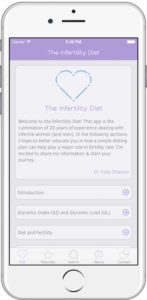Ovarian Reserve and Fertility
Ovarian reserve can play an important role in fertility. Unlike sperm, which men create throughout their adult lives, women are born with a finite number of eggs. A female fetus contains approximately seven million eggs, but by the time that fetus has become a baby girl and is born, the number of eggs in her ovaries is down to between one and two million. By puberty, a normal girl will have lost all but 400,000 of those eggs, and she will continue, throughout her adult life, to lose approximately 1,000 eggs each month. It is estimated that during a woman’s reproductive life, she will ovulate only about 450 eggs; the rest of that large reserve will die naturally on their own.
An excellent video on the menstrual cycle, the effects of FSH and LH, ovulation and implantation
The age of fertility
Women have children at all different ages. But they are actually most fertile during their late teens and 20s, and for most women, getting pregnant becomes somewhat more difficult by the mid thirties. This is primarily because the number of eggs decreases as women age. Studies have shown that at age 37 (approximately), there is a further acceleration in the loss of eggs, and therefore becoming pregnant becomes more difficult again. By the time women reach the age of 43 or 44, their chances of becoming pregnant are drastically reduced, so much so, that many fertility programs will not accept women of this age, even those with normal ovarian testing results.
It is also true that over time, the quality of eggs that are left in the ovaries becomes compromised. This means that the risk of having a baby with birth defects increases significantly after the age of 35, and especially after 40. A new study (please click to read the details) shows that women 38 or older should consider moving more quickly to IVF.


